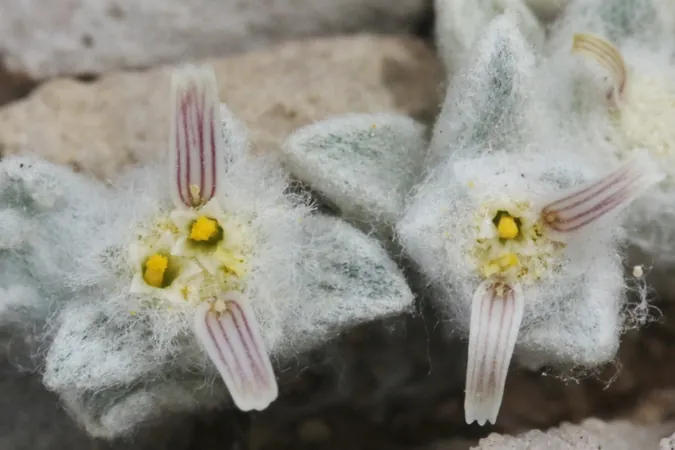
Shocking Discovery: New Sunflower Species Found in Texas National Park!
2025-03-31
Author: Ming
In a remarkable turn of events, scientists have uncovered a new member of the sunflower family in the iconic Big Bend National Park, Texas—the first new plant genus and species identified in a U.S. national park in nearly fifty years!
This intriguing flower, officially named *Ovicula biradiata*, and nicknamed the "wooly devil," was detailed in a study published in February in the prestigious journal PhytoKeys. Despite being a well-explored area among botanists, Big Bend continues to surprise with its hidden treasures, proving that nature still holds many secrets.
Isaac Lichter Marck, a plant taxonomist affiliated with the California Academy of Sciences and co-author of the study, remarked, “It’s a common assumption that all flora and fauna in our national parks are already documented; however, scientists continue to make astonishing discoveries in these cherished landscapes.”
What sets *O. biradiata* apart is that it doesn’t immediately resemble the cheerful, sunburst-style sunflowers we typically envision. By sequencing its DNA and comparing it with specimens in the Academy’s herbarium, researchers learn that this small, fuzzy plant has earned its own genus due to its distinctness from its sunflower relatives.
The wooly devil was first spotted by a park volunteer in March 2024 when they submitted its details through the community science app, iNaturalist. This fascinating plant, which boasts furry white leaves and maroon-striped florets that resemble "petals," has earned the nickname "belly plant" because the best way to observe it is from a lying position. Thriving in rocky, arid habitats, this unique flower only blooms in response to rainfall.
“Desert plants are often uniquely adapted to survive in their harsh environments, employing various methods to endure severe drought and sudden influxes of water. This includes water-storing structures and quick life cycles triggered by rain,” Lichter Marck explained. "Sadly, as climate change intensifies and makes these environments hotter and drier, specialized plants like the wooly devil are at risk of extinction." The species has only been noted in three scattered areas of the park’s northern edge, raising concerns about its potential decline.
The name *Ovicula* translates to "tiny sheep," reflecting the wooly texture of its leaves and a nod to the park’s bighorn sheep population. In contrast, *biradiata* means "bi-radial," a reference to its distinctive maroon stripes.
Carolyn Whiting, a botanist at Big Bend and co-author of the research, expressed her enthusiasm, "Now that we've identified and named this species, there's so much more to discover! I am eager to locate other populations within the park and delve into its life cycle and reproduction." With the region currently under drought conditions, it remains uncertain if more wooly devils will sprout in the spring, Whiting noted.
Additionally, researchers have noted the presence of special glands in the wooly devil that may harbor anti-cancer and anti-inflammatory properties found in other sunflower family members. While these claims need further investigation, co-author Keily Peralta from the California Academy of Sciences states, “This discovery highlights the untapped potential of preserving plant diversity in our sensitive desert ecosystems.”
Who knows what other hidden botanical marvels are waiting to be discovered in the wilds of Big Bend National Park? Stay tuned for more thrilling updates from the world of plant exploration!


 Brasil (PT)
Brasil (PT)
 Canada (EN)
Canada (EN)
 Chile (ES)
Chile (ES)
 Česko (CS)
Česko (CS)
 대한민국 (KO)
대한민국 (KO)
 España (ES)
España (ES)
 France (FR)
France (FR)
 Hong Kong (EN)
Hong Kong (EN)
 Italia (IT)
Italia (IT)
 日本 (JA)
日本 (JA)
 Magyarország (HU)
Magyarország (HU)
 Norge (NO)
Norge (NO)
 Polska (PL)
Polska (PL)
 Schweiz (DE)
Schweiz (DE)
 Singapore (EN)
Singapore (EN)
 Sverige (SV)
Sverige (SV)
 Suomi (FI)
Suomi (FI)
 Türkiye (TR)
Türkiye (TR)
 الإمارات العربية المتحدة (AR)
الإمارات العربية المتحدة (AR)